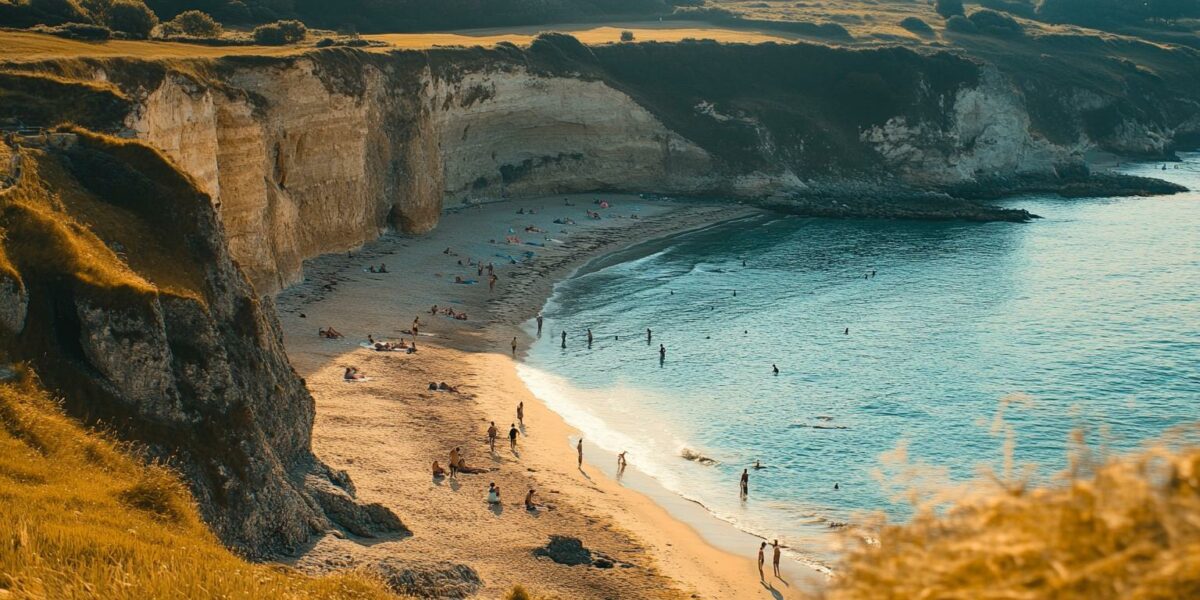The Heatwave Exodus to California’s Beaches
Throughout July, heat waves have swept across the United States, with Southern California enduring some of the highest temperatures. In Palm Springs, the mercury hit an all-time high of 124°F. Such extreme conditions drive residents to the coast, where they hope to find cooler temperatures and relief from the scorching heat.
This migration to the coast is not new. For over a century, Los Angeles families have sought refuge at the beach during heatwaves. In the early 20th century, they would even sleep on the cool, damp sand. More recently, during the 2020 COVID-19 lockdown, the closure of beaches led to public outcry, highlighting the deep connection Californians have with their beaches.
However, the future of these coastal sanctuaries is uncertain. Climate change poses a significant threat to California’s beaches. A 2017 study by engineers and marine scientists projected that up to 67% of Southern California beaches could be completely eroded by rising sea levels.
The irony is that many of these beaches are artificial. Over the years, human intervention has expanded them far beyond their natural state. The challenge now is to transition from working against nature to collaborating with it to preserve these vital coastal areas.
Historical Insights: From Natural to Man-Made Beaches
In the late 19th century, California’s beaches were dramatically different. High bluffs and deep arroyos made much of the coastline inaccessible. By the 1930s, efforts to transform these narrow, natural beaches into the wide expanses seen today were well underway.
A combination of engineering innovation, neglect, and chance led to the drastic changes in the 1930s. Coastal towns like Santa Barbara and Santa Monica built breakwaters to create yacht harbors, which unintentionally disrupted sediment flow and led to significant erosion.
The beaches naturally fluctuate with the seasons, growing wider in the summer and narrower in the winter. However, human interventions that disrupted these cycles caused severe erosion. To combat this, engineers began pumping sand from nearby dunes to replenish the beaches.
The 20th century saw extensive efforts to widen and stabilize beaches. These included:
- Using sand from the Hyperion Dunes to replenish Venice Beach.
- Spreading millions of cubic yards of sand along the coast between Santa Monica and El Segundo.
- Dredging sand from the ocean floor to widen beaches like Dockweiler and Redondo.
Modern Challenges and the Path Forward
While past efforts to expand Southern California’s beaches were initially successful, climate change and environmental regulations have introduced new challenges. The cold surface waters that once protected the beaches from sea-level rise are no longer as effective.
Flood control measures and dam constructions have cut off the natural sediment supply that once nourished the beaches. Additionally, environmental regulations now limit dredging and other coastal constructions that previously helped maintain the beach width.
In response, municipalities have turned to “armoring” the beaches with seawalls and jetties. While this provides short-term relief, it often exacerbates erosion in the long run or shifts the problem to other areas of the coast.
To safeguard California’s beaches, it’s essential to learn from history and stop working against natural processes. Instead of armoring, selective managed retreat and pilot projects involving native plants to trap sand can help restore the natural flow of sediments and combat sea-level rise.
The Role of Climate Change in Beach Preservation
Addressing the root cause of climate change is crucial for any long-term beach preservation strategy. Our dependence on fossil fuels is driving sea-level rises and contributing to the erosion of California’s beaches. Efforts to reduce carbon emissions must be part of the broader plan to protect these coastal treasures.
Without significant action on climate change, even the most well-designed beach protection plans will likely fail. This includes tackling our reliance on fossil fuels and investing in renewable energy sources to mitigate the effects of global warming.
California’s beaches are a testament to human ingenuity, but they also highlight the consequences of interfering with natural systems. As we face the challenges of climate change, it’s imperative to adopt a more sustainable approach that works with nature rather than against it.
Continuing with the status quo will lead to narrower beaches and potentially a future without the beloved coastal landscapes that have defined Southern California for generations. It’s time to act decisively to preserve these vital natural resources for future generations.



jordan
OMG, if we don’t act soon, we might lose Venice Beach! 😱
Ruby_Shadowdancer
It’s frustrating that environmental regulations are limiting solutions. Can’t we find a balance that works?
GabriellaAmethyst1
Are there any volunteer programs to help with beach restoration initiatives? Would love to get involved!
Ethan
Great article, but I’m curious about how effective those native plant projects have been so far. Any data on that?
OwenSentinel
What specific actions can individuals take to help preserve California’s beaches?
Bailey_Quester
Wow, I had no idea so many of California’s beaches were actually artificial. 😲 Thanks for the eye-opening information!